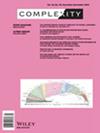Two-Dimensional Lattice Complexity Features of Abdominal CT Images to Predict Patient Survival After Hepatectomy for Hepatocellular Carcinoma
Abstract
To evaluate the effectiveness of certain complexity features extracted from CT images of the liver for predicting the survival of patients with hepatocellular carcinoma, either exclusively or in conjunction with specific diagnostic indicators, we gathered data from presurgery CT scans of 103 HCC patients with survival period either above (n = 65) or below (n = 38) 42 months after hepatectomy. The two-dimensional Hilbert curve was used to maintain both local and global structural information to calculate the lattice complexity features. In addition, gray-level co-occurrence matrix features and local binary features were incorporated. These features were assessed for performance of support vector machine predictive models through the receiver operator characteristic curve and area under the curve. The top proficiency was achieved by the lattice complexity features resulting in models with an accuracy of 76.47% and an area under the receiver operator characteristic curve of 0.75. The study found that two-dimensional lattice complexity features derived from CT images that covered the entire abdomen have the potential to predict survival patients with in hepatocellular carcinoma using support vector machine models.


 求助内容:
求助内容: 应助结果提醒方式:
应助结果提醒方式:


